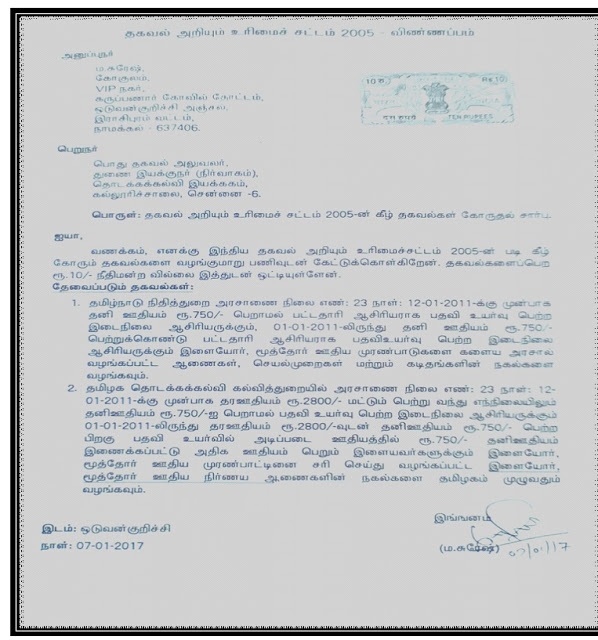7th Pay Commission : 15 things you need to know
1. The present system of pay bands and grade pay has been dropped and a new pay matrix as recommended by the commission has been approved. Separate pay matrices have been drawn up for civilians, defence personnel and for military nursing service.
By doing away with the pay bands and grade pay, the new pay matrix ensures that there are no abrupt jumps in salaries upon promotion in different pay bands.
3. The minimum pay has been increased from Rs 7,000 to Rs 18, 000 per month. Starting salary of a newly recruited employee at lowest level will now be Rs 18,000 whereas for a freshly recruited Class I officer, it will be Rs 56,100.
4. For the purpose of revision of pay and pension, a fitment factor of 2.57 will be applied across all levels in the pay matrices. After taking into account the DA at prevailing rate, the salary/pension of all government employees/pensioners will be raised by at least 14.29 % as on January 1, 2016.
5. Rate of increment has been retained at 3%. This will benefit the employees in future on account of higher basic pay as the annual increments that they earn in future will be 2.57 times than at present.
6. The Cabinet approved further improvements in the defence pay matrix by enhancing Index of Rationalisation for Level 13A (Brigadier) and providing for additional stages in Level 12A (Lieutenant Colonel), 13 (Colonel) and 13A (Brigadier) in order to bring parity with Combined Armed Police Forces (CAPF) counterparts at the maximum of the respective Levels.
7. Some other decisions impacting the employees including defence and Combined Armed Police Forces (CAPF) personnel include:
*Gratuity ceiling enhanced from Rs 10 to 20 lakh. The ceiling on gratuity will increase by 25% whenever DA rises by 50 %.
*A common regime for payment of ex-gratia lump sum compensation for civil and defence forces personnel payable to next of kin with the existing rates enhanced from Rs 10-20 lakh to Rs 25-45 lakh for different categories.
*Rates of military service pay revised from Rs 1,000, Rs 2,000, Rs 4,200 and Rs 6,000 to Rs 3,600, Rs 5,200, Rs 10,800 and Rs 15,500 respectively for various categories of defence forces personnel.
*Terminal gratuity equivalent of 10.5 months of reckonable emoluments for Short Service Commissioned Officers who will be allowed to exit armed forces any time between seven and 10 years of service.
*Hospital leave, special disability leave and sick leave absorbed into a composite new leave named ‘Work Related Illness and Injury Leave’ (WRIIL). Full pay and allowances will be granted to all employees during the entire period of hospitalisation on account of WRIIL.
9. The Cabinet also decided not to accept the steep hike in monthly contribution towards Central Government Employees Group Insurance Scheme (CGEGIS) recommended by the commission. The existing rates of monthly contribution will continue. This will increase the take home salary of employees at lower levels by Rs 1,470. However, considering the need for social security of employees, the Cabinet has asked ministry of finance to work out a customised group insurance scheme for central government employees with low premium and high risk cover.
10. The general recommendations of the commission on pension and related benefits have been approved by the Cabinet. Both the options recommended by the commission as regards pension revision have been accepted subject to feasibility of their implementation. Revision of pension using the second option based on fitment factor of 2.57 shall be implemented immediately. A committee is being constituted to address the implementation issues anticipated in the first formulation. The first formulation may be made applicable if its implementation is found feasible after examination by proposed committee which is to submit its report within four months.
11. The commission examined a total of 196 existing allowances and, by way of rationalisation, recommended abolition of 51 allowances and subsuming of 37 allowances. Given the significant changes in the existing provisions for allowances, which may have wide ranging implications, the cabinet decided to constitute a committee headed by the finance secretary for further examination of the recommendations of the pay panel on allowances. The committee will submit its reports within four months. Till a final decision, all existing allowances will continue to be paid at the existing rates.
12. The cabinet also decided to constitute two separate committees: (i) to suggest measures for streamlining the implementation of National Pension System (NPS) and (ii) to look into anomalies likely to arise out of implementation of the commission’s report.
13. Apart from the pay, pension and other recommendations approved by the cabinet, it was decided that the concerned ministries may examine the issues that are administrative in nature, individual post/ cadre specific and issues in which the commission has not been able to arrive at a consensus.
14. As estimated by the pay panel, the additional financial impact on account of implementation of all its recommendations in 2016-17 will be Rs 1,02,100 crore. There will be an additional implication of Rs 12,133 crore on account of payments of arrears of pay and pension for two months of 2015-16.
15. Finance minister Arun Jaitley said the National Democratic Alliance government has taken the decision to implement the report of the 7th Pay Commission much faster than in the past.
